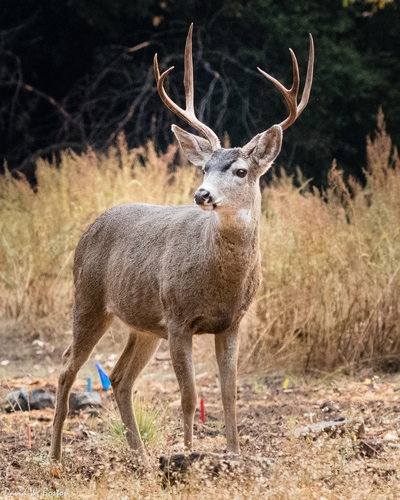
Mule Deer
The mule deer, with its distinct black-tipped tail and large ears, is a resilient herbivore of North America's diverse landscapes. Famous for its 'stotting' escape leaps, it holds a vital ecological role, shaping vegetation and supporting predator populations.
9-11 years
Lifespan
90.72 - 181.44 kg
Weight
Length: 1.18872 - 2.10312 m; Height: 79 - 107 cm
Size
Brown, Grey
Color
1-2 years
Age of Sexual Maturity
5-6 months
Age of Weaning
Low
Aggression
45 mph
Top Speed
Least Concern
Conservation Status
Stable
Population Trend
Distribution Range of the Mule Deer
Odocoileus hemionus, commonly known as the mule deer, is native to North America. Its geographical distribution extends from the western United States, through parts of Canada and down into central Mexico. The species is primarily found in the Rocky Mountains, the western Great Plains, and along the Pacific coastline.
Mule Deer's Habitat
Environmental Conditions
Mule deer inhabit a wide range of environmental conditions including deserts, forests, grasslands, and mountainous regions. They thrive in areas where shrubs and trees provide ample cover and browse opportunities.
Ecological Niche
The mule deer occupies an ecological niche as a browser, feeding primarily on shrubs, leaves, and twigs, though they also consume grasses and forbs. They play a vital role in their ecosystems by helping to control vegetation growth and serving as prey for various predators such as cougars, wolves, and coyotes.
Copyright @ Nature Style Limited. All Rights Reserved.
 English
English